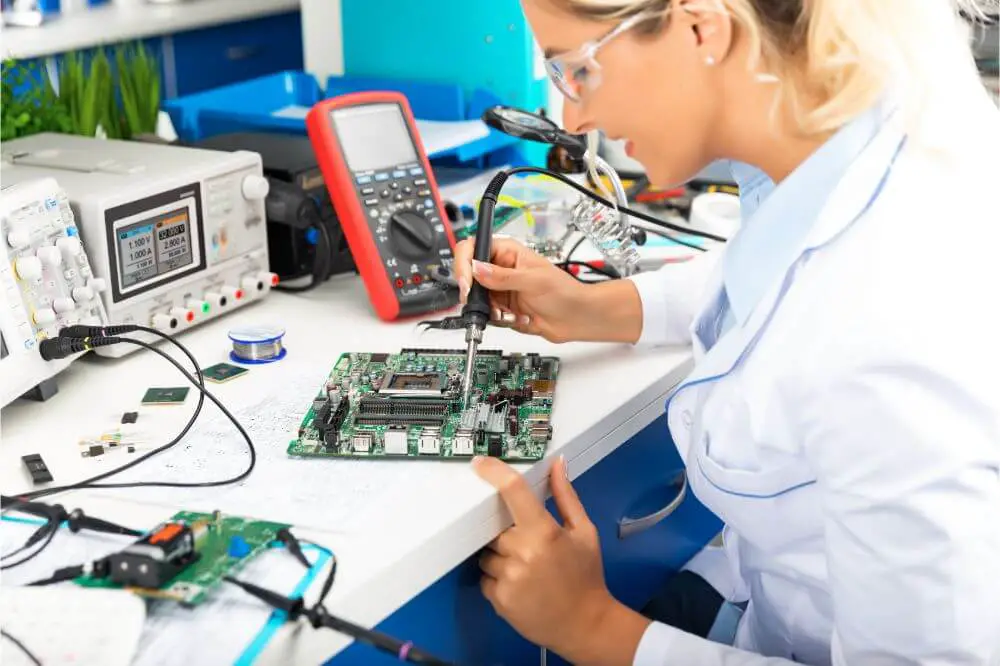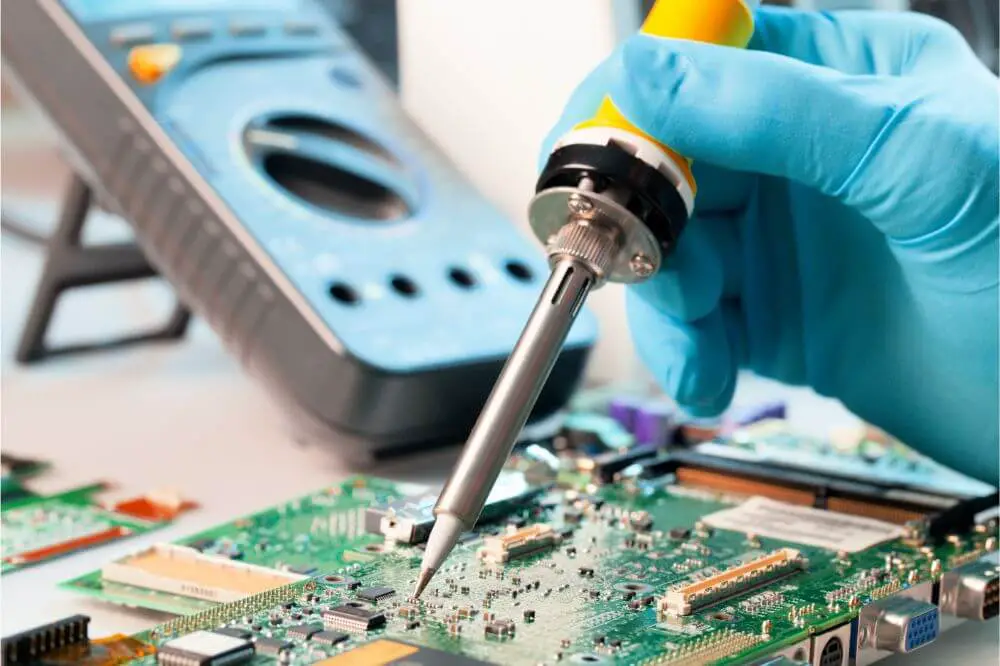As you may know, soldering is the process of merging two medals by using a solder alloy. Actually, soldering is one of the ancient, most common techniques used to bind two metals together. In any metal equipment, any faulty solder joint is a major cause of alarm because it raises the chances of its failure.
That’s why it’s necessary to emphasize on soldering such faults before things totally get out of hand. Here, we are going to look at what temperature soldering iron for PCB. The information on this piece is well researched and structured for the benefit of your knowledge.
Therefore, we’ll start by understanding the basic requirements needed in soldering.
Soldering Basics
Before a solder can join two pieces of metal together, melting has to take place. And melting depends on several factors, the common one being the properties of the solder. For instance, a solder made from a combination of lead and tin usually takes longer to melt. This is because a solder made of two metal alloys begins to melt at around 180 C – 362 F.
However, such a solder only melts fully at a temperature range of about 214 C – 420 F. Now when a fifty-fifty solder attains such temperatures, it exists in a semi-liquid or plastic state. And this becomes its right soldering temperature.
Besides that, the ratio of tin to lead within a solder brings about a varying difference in the solder’s plastic range. If unaware, a solder with a higher tin ratio compared to lead is known as a eutectic solder. Such a solder lacks a plastic range and melts almost instantly at around 180 C – 360 F.
Another soldering basic is the wetting action, which is the metal solvent action that takes place when a hot solder is placed on a copper surface. When this happens, the hot solder first dissolves and then penetrates the hot copper surface, where the solder and copper molecules blend together to form a new and different alloy.
However, the copper surface has to be free from any contamination for you to have a successful wetting action. Additionally, your solder and the working area must first obtain the right temperature for a successful soldering process.
The Importance of Flux in Soldering
Flux is a chemical cleaning agent that’s used when soldering electronic components onto a circuit board. This material is necessary both before and during the soldering process. Flux can be applicable either manually or in the automated soldering method used by PCB contract manufacturers.
The main purpose of using flux is so that the metal surface is prepared for soldering by removing and cleaning any available impurities or oxides. Additionally, flux protects metal surfaces from re-oxidation when soldering, which ensures a clean and effective soldering operation.
And for a better wetting action, flux is made up of both an activator and a base material that remove any oxides from the metal in question. And depending on where or how you decide to use it, flux maybe in liquid form, pasty, or solid. Such states vary both in the handheld and the automated soldering methods.

The Right Soldering Temperature Iron for PCB
Not many people think about what temperature soldering iron for PCB is needed. But this should be the first step before undertaking any soldering activity. As mentioned earlier, most solders melt between 180 – 190 degrees Celsius, which is equivalent to 360 – 370 degrees Fahrenheit.
Because soldering irons come in different shapes and sizes, these will alter the transfer of heat on the soldering iron’s tip. Therefore, you must maintain a consistent tinned surface on the tip’s surface for adequate heat transfer and to prevent any impurity transfer to the solder connection.
In most cases, the tip’s temperature isn’t considered, and this is because it doesn’t bear such an impact in the soldering process. However, it’s still important to start the soldering process with the lowest temperature possible, and steadily increase it while working until the optimum temperature is reached.
Once you’ve attained the desired heat transfer, you’ll now have to consider controlling the heat. That is, you’ll need to monitor the heat cycle of the entire soldering process by checking on how fast and how hot the work gets. Similarly, it would also be best if you ascertained how long the solder stays hot during the whole process.
Surface Condition and Thermal Linkage
After ensuring the solder tip is at optimal functionality, the next step is now applying the solder. At this point, the surface condition should be in a state to favor the linkage between the solder tip and the working area. Therefore, the surface should be free from oxides or any other contaminations, which bring a barrier to heat flow.
When you’ve cleared that barrier, thermal linkage is the next consideration, which is the area of work between the solder’s iron tip and the surface. This is where heat is transferred via the small contact area linking the tip and the work. When the thermal linkage is increased, you get rapid heat transfer into the soldering work.
Cleaning the Solder after use
Cleaning the solder after use demands you do it within an hour after the soldering work is done. During cleaning, you’ll notice that there are some flux residues and those need to be adequately removed immediately.
The following are some of the commonly used mechanical methods to clean a solder
- Brushing
- Spraying
- Agitation, etc.
Once the solder is properly cleaned, the boards should be immensely dried, and iron kept in a holder. Additionally, the tip should be cleaned and coated a minimum amount of solder.
Bottom line
Soldering iron for PCB requires one to be as professional as possible if the work is to be first class. Most importantly, one should start soldering with a lower temperature and then increase gradually as the process progresses. This will ensure the best results. You want to achieve lasting results with every soldering process, hence the need to follow the recommended procedures.


